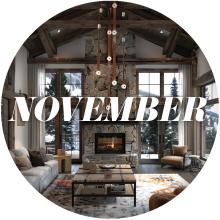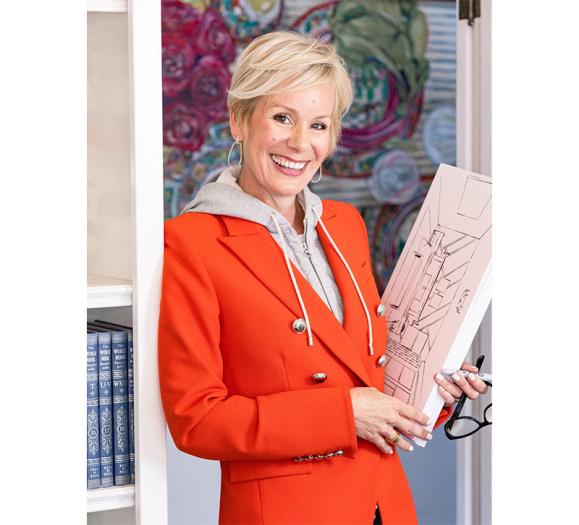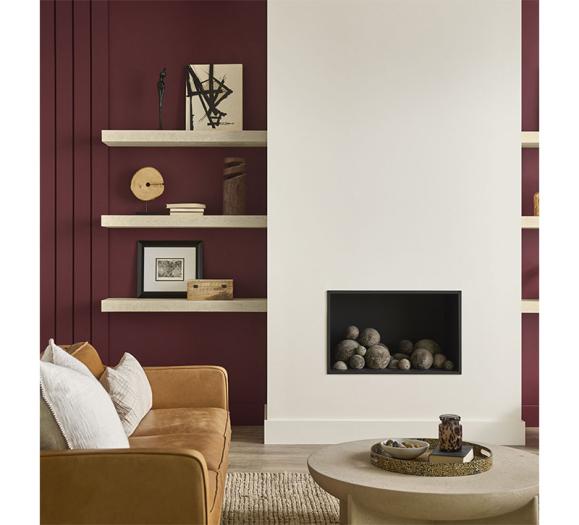"Stretching your creativity.” “Great marketing opportunity.” “Collaborating with other designers.” “Cementing relationships with suppliers.” “Giving back to the community.” These are some of the benefits interior designers share from their showhome endeavors, a process that requires vetting, a significant investment of time and often money, and the fortitude to design a room or rooms in a home — sometimes with parameters, sometimes not — only to tear it all down weeks after its completed and pictures are taken, putting everything back the way it was.
Is it worth it? Unilaterally, the designers we spoke with say “Yes.” Would they do it again? “Maybe.”
Most recently, the International Design Society’s Charlotte, NC, chapter undertook a showhome project that incorporated three homes (new builds), 45 Charlotte-based IDS-accredited designers and as many rooms, which made this endeavor unique.
Large crowds attended a sip-and-see event in February just before the homes were furnished, and a kickoff gala and tours were slated for March and early April, along with media coverage, including local consumer sponsor shelter publication, Home Design & Decor. The entire program benefited local North Carolina charities, something designers said helped them decide to participate. That participation included a fee for entry, procuring materials and labor on the part of each designer, and often more than a year of time from planning to presentation, which is typical for showhomes regardless of location.
Marketing your design style through producing a room in a showhome has become somewhat of a coveted experience for many interior designers, even if they have to “beg, borrow and steal” to get the project completed on their own time while servicing paying clients and knowing that, in most cases, once the pictures are taken, they are also responsible for putting the house back the way they found it.
Using a Show Home to Build Credibility
“It’s a huge investment,” says Interior Designer Lori Miller, who owns LGC Interior Design, in Long Island, NY. “However, I really feel like you can’t pay for that amount of advertising. Publications are covering the show house, local news channels. I’m in front of editors I wouldn’t have been in front of otherwise. And it gives you credibility. Potential clients see that you’ve been around. I would want to hire someone who’s been published.”
Miller has participated in several showhomes in her career including, most recently, the Manhattan Holiday House and the Hampton House, in Long Island.
While there’s no guarantee that your specific room might make it into that esteemed shelter publication, the buzz that gets created around showhomes is good for publicity in other ways as well, including providing lots of beautiful, professional photos for Instagram, websites and portfolios.
“Through social media, you can get clients,” says Interior Designer Donna Moss, who has extensive showhome experience, having been a designer and showhome producer. Moss was also a finalist on HGTV’s “Design Star,” hosted HGTV’s “Donna Decorates Dallas,” and is currently creating programming for HDTV, a home design programming network that will feature her latest show home design and process — Armoniosa, a 10,000-square-foot modern home in Las Vegas. “Once I started doing showhouses, I became very well known in the community. You can get a lot of business.”
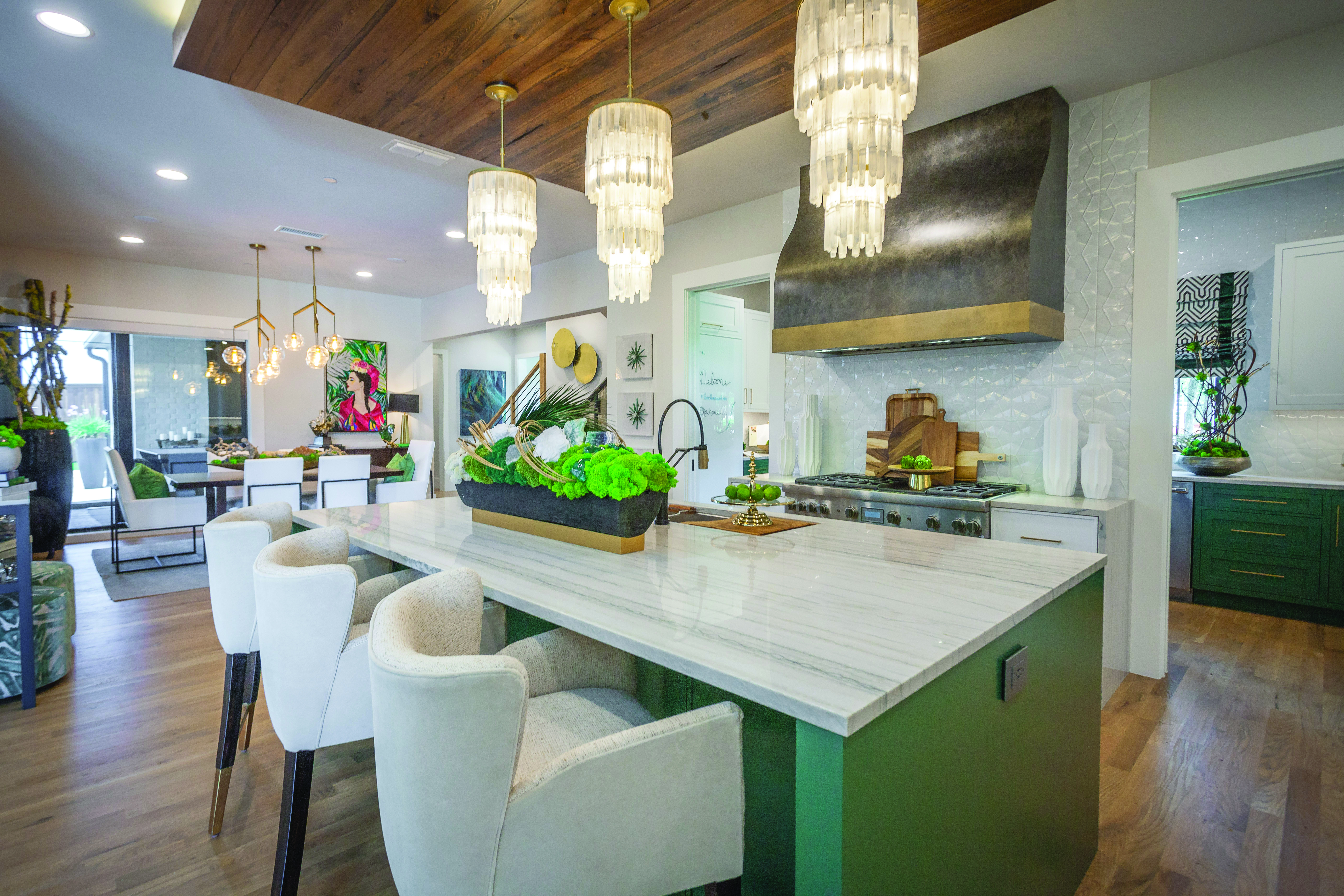
Moss partnered with Kimberly Joi McDonald, the 2019 national president of the Interior Design Society, Owner of Designing JOI LLC, and Las Vegas designer for Armoniosa. Like the Charlotte showhomes, Armoniosa was a long process, planning while the house was being built, paying attention to, in this case, the modern minimalist design aesthetic of the eventual homeowner, and completing the project in time to coincide with the January Las Vegas Market.
For McDonald, the project, while challenging, helped her achieve goals and credibility. “I wanted the exposure, and I wanted to be in that client niche,” she says. “I never worked on a project that was 10,000 square feet before. This distinguishes you. It showcases that you have the talent to handle a project with that level of responsibility.”
That level of responsibility and your unique design style live on in the pages of magazines, Instagram feeds and the minds of potential clients. For many designers, the goal of participating in a showhome is showcasing their creative style beyond what can be done in a client’s home.
Unleashing Creativity in a Show Home
“It’s fun to be our own client for a minute and do the things we like to do,” says Kurt Jacob Miller of design firm Jacob Lukas Design. “We get to use dream pieces we can’t use in regular jobs.” Jacob Lukas Design has participated in several showhomes and last fall’s Alden Parkes Showhouse in a Showroom at High Point Market. They were on track to design eight of the spaces at this April’s High Point Market, which has been postponed until June because of the coronavirus outbreak. As newer designers, Miller continues, the exposure from the showhome experiences they’ve had have been worth the effort.
For Zachary Luke, Charlotte-based designer and founder of Zachary Luke Designs, the gender-neutral bedroom he designed in the IDS Charlotte showhomes gave him a way to showcase his transitional style. For Luke, who focuses 50 percent of his time on hospitality and commercial projects, this was a chance to gain exposure and visibility in his region.
Luke adds that giving back to the community made the project worthwhile as well. “If people buy the furnishings [I’ve put into my room], 100 percent goes toward the charity and everything in the room can be sold.” As the homes themselves were for sale, buyers of the three Davidson homes In the IDS Charlotte program would be able to buy any of the furnishings and designs in place if they choose to as well.

Beyond the exposure and marketing opportunities, say designers, the showhome experience can be a lot of fun. There are challenges, of course, but there are also opportunities to network with other designers, discover new styles and meet key people, such as builders and new vendors.
“The thing that’s been most fun was the ability to stretch our creative muscle and design in ways we wouldn’t be able to do in a typical client project,” says Interior Designer Melissa Lee, Owner of New South Home design firm in Charlotte. “We also made friends. It was fun to get closer with the designers in our home. Even though we were in IDS together, this has gotten us closer.”
While noting that it has been a great experience, is Lee anxious to get to work on the next showhome? “We’re interested to see how it goes,” she says. “I would entertain doing another one, especially if it’s local.”

